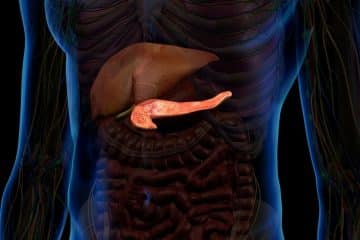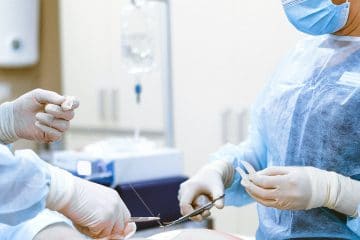Medical Device Clinical Trials
Based on the region, there are different classification systems, definitions, and requirements for medical devices that also vary.
In U.S. Food and Drug Administration (FDA) is in charge of controlling every step, including clinical trials, to determine if medical devices meet safety and effectiveness standards before they are marketed.
In the article below, we will review the classification of medical devices, and discuss which of them need clinical trials and how they are conducted.
The Definition of Medical Device
Medical devices include a broad range of products, from simple tiny things like thermometers to complicated, enormous MRI machines.
According to the FDA, the medical device is “an instrument, apparatus, implement, machine, contrivance, implant, in vitro reagent, or another similar or related article” that is used alone or in combination for one or more following medical purposes:
- diagnosis, monitoring, alleviation, treatment or prevention of diseases or injuries
- the investigation, modification, replacement or support of the anatomy or physiological processes
- control of conception
- supporting or sustaining life
Medical devices do not achieve their principal intended purposes by chemical action or by being metabolized.
Classification of Medical Devices and Control Measures
There are more than 1500 different types of devices on the FDA list. Based on the risks of the device use and the level of control necessary to assure safety, all of them fall into one of the three categories:
Class I (low risk) – out of all medical devices 47% fall into this category and 95% of them do not require any specific regulatory processes. Gauzes, toothbrushes, bandages, and stethoscopes fall into this category.
Class II (moderate risk) – 43% of medical devices, including suture needles, contact lenses, catheters, surgical gloves, and pregnancy test kits.
Class III (High risk) – it’s the smallest group, but contains devices that are critical for life support and pose a high risk in case of malfunction or misuse. Pacemakers, HIV test kits, ventilators, angioplasty catheters, heart valves, and various other types of implants are in class 3.
As we can see the risks increase from I to III, and so do the regulatory controls. Class I devices can be subjected to General control only. Class II devices may require Special control for approval, while Class 3, high-risk devices need the latter two, plus Premarket approval.
You can find more information about these regulatory controls here. To cut a long story short, for some devices clinical trials may not be required at all. But for all class III and some class II devices, it is an absolute necessity.
How are Clinical Trials Initiated?
To conduct a human study in the U.S., FDA approval of Investigational Device Exemption (IDE) is required.
Before FDA gives this approval, it needs to take into notice multiple factors: the background of medical issues, detailed description of the device, previous preclinical and clinical studies, careful risk analysis, patient monitoring and follow-up plan, sample size, inclusion and exclusion criteria, etc.
After the review, FDA can decide to approve the trial, disapprove it or approve it with conditions. In the latter case, the trial is allowed to start if the sponsor agrees to address all conditions listed in the approval letter within 45 days.
FDA can approve IDE applications for various types of clinical trials: Early feasibility study, Feasibility study, Pivotal study, etc. You can find the exact descriptions below.
Clinical Trials
- Early Feasibility Study (EFS) – may include less than 15 patients. This type of trial is for devices that are in the early stage of development and device design is not final, hence the approval of EFS IDE may be given based on insufficient clinical data.
- Feasibility study – a small clinical trial, generally including from 10 to 40 subjects, that does not intend to provide evidence for marketing application or to justify risks and benefits. Instead, it is focused mainly on patient safety. Feasibility studies are often required by FDA to assess the safety and answer basic research questions before they permit conducting, a larger pivotal study.
- Pivotal study – after the feasibility study, the company may receive an IDE to conduct a pivotal study that enrolls hundreds of patients and intends to collect data to prove the effectiveness and safety of medical devices. Endpoints and sample sizes are statistically driven and provide support for marketing applications. The FDA review here is much more complex than in the case of previous trials.
- Post-approval study – even if FDA approves a medical device, further studies are still necessary to obtain long-term data.
Does Successful Study Imply Device Approval?
The short answer is often, but not always. Sometimes alternative clinical or non-clinical data may conflict with study results, or serious safety concerns may be observed in subsequent clinical trials.
This may lead to devise disapproval or approval with limited indication and requirement of new reliable data.
In turn, the study failure does not always lead to premarket approval application disapproval, since the FDA claims it is always willing to review all available data to determine whether there is a reasonable assurance that the device is safe and effective
Take-Home Points
Not all medical devices require clinical trials to get FDA approval. To conduct clinical trials in the U.S., companies need to grant IDE approval.
There are multiple types of clinical trials, with separate goals, like proving subsequent studies’ safety or demonstrating the effectiveness of the device itself. In general, medical device clinical trials include fewer subjects than drug studies.
See Also
Types of Surgery – Classifications of Surgery
Reverse Shoulder Replacement Surgery Cost
What are The Most Painful Surgeries?
References:
https://www.fda.gov/Medical-Devices
https://www.fda.gov/medical-devices/overview-device-regulation/classify-your-medical-device
https://www.fda.gov/media/123602/download
https://www.accessdata.fda.gov/scripts/cdrh/cfdocs/cfpcd/classification.cfm
https://www.fda.gov/medical-devices/regulatory-controls/general-controls-medical-devices


